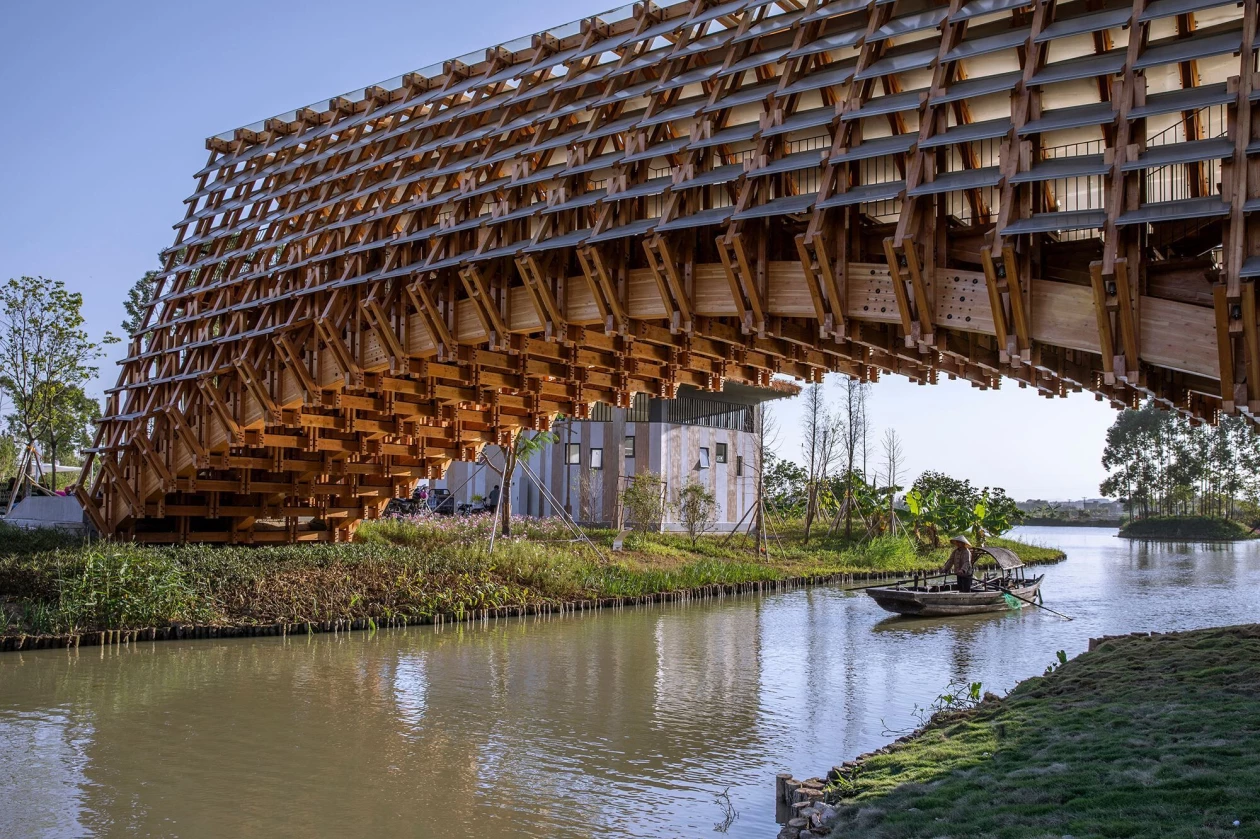Pedestrian Bridge design retrofitting involves upgrading existing bridge structures to enhance performance, extend service life, and accommodate evolving design standards and traffic demands. Retrofitting Pedestrian Bridge design can address structural deficiencies, improve safety, and incorporate modern technologies while preserving the historical and aesthetic value of the bridge. Here are key considerations and methods for retrofitting Pedestrian Bridge designs:
1. Structural Upgrades:
- Strengthening Components:
- Reinforce timber members with steel plates, fiber-reinforced polymers (FRP), or carbon fiber wraps to increase load-carrying capacity and resistance to dynamic loads.
- Additional Supports:
- Install supplementary timber beams, trusses, or braces to redistribute loads and alleviate stress on existing bridge components.
2. Deck Replacement and Rehabilitation:
- Deck Overlay:
- Apply new timber decking or composite materials over existing bridge decks to improve durability, enhance skid resistance, and accommodate heavier traffic loads.
- Deck Strengthening:
- Retrofit bridge decks with additional timber planks, laminates, or reinforced concrete layers to increase load capacity and withstand heavier vehicle weights.
3. Seismic Retrofitting:
- Base Isolation:
- Implement base isolation techniques, such as elastomeric bearings or friction pendulum systems, to mitigate seismic forces and enhance bridge resilience during earthquakes.
- Seismic Bracing:
- Install seismic bracing systems, shear walls, or dampers to reduce lateral movement and improve structural stability under seismic loading conditions.
4. Environmental Upgrades:
- Moisture Protection:
- Apply waterproof coatings, sealants, or membranes to timber components to prevent moisture ingress, decay, and fungal growth.
- Fire Resistance:
- Treat timber elements with fire-retardant coatings or intumescent paints to enhance fire resistance and comply with safety regulations.
5. Safety and Accessibility Improvements:
- Guardrail Installation:
- Install new guardrails, parapets, or safety barriers to meet current safety standards and improve pedestrian and vehicular safety on the bridge.
- Accessibility Enhancements:
- Incorporate ADA-compliant features, such as wheelchair ramps, handrails, and tactile paving, to ensure accessibility for all users.
6. Technological Integration:
- Monitoring Systems:
- Install structural health monitoring (SHM) systems to continuously assess bridge condition, detect potential issues, and optimize maintenance strategies.
- Smart Infrastructure Solutions:
- Integrate sensors, IoT devices, and data analytics to enable real-time performance monitoring, predictive maintenance, and adaptive management of Pedestrian Bridge design assets.
7. Historic Preservation:
- Preserving Architectural Integrity:
- Retrofit Pedestrian Bridge designs in accordance with historical preservation guidelines to maintain architectural authenticity and cultural heritage value.
Conclusion:
Pedestrian Bridge design retrofitting is a multifaceted process that involves strategic planning, engineering analysis, and construction expertise to enhance the performance, safety, and sustainability of existing timber structures. By implementing targeted upgrades, incorporating innovative technologies, and adopting adaptive design strategies, Pedestrian Bridge design retrofitting ensures that these vital transportation assets remain functional, resilient, and environmentally responsible for future generations. Collaboration among stakeholders, including engineers, architects, preservationists, and regulatory agencies, is essential for successfully retrofitting Pedestrian Bridge designs while balancing technical requirements with heritage preservation and community needs.



